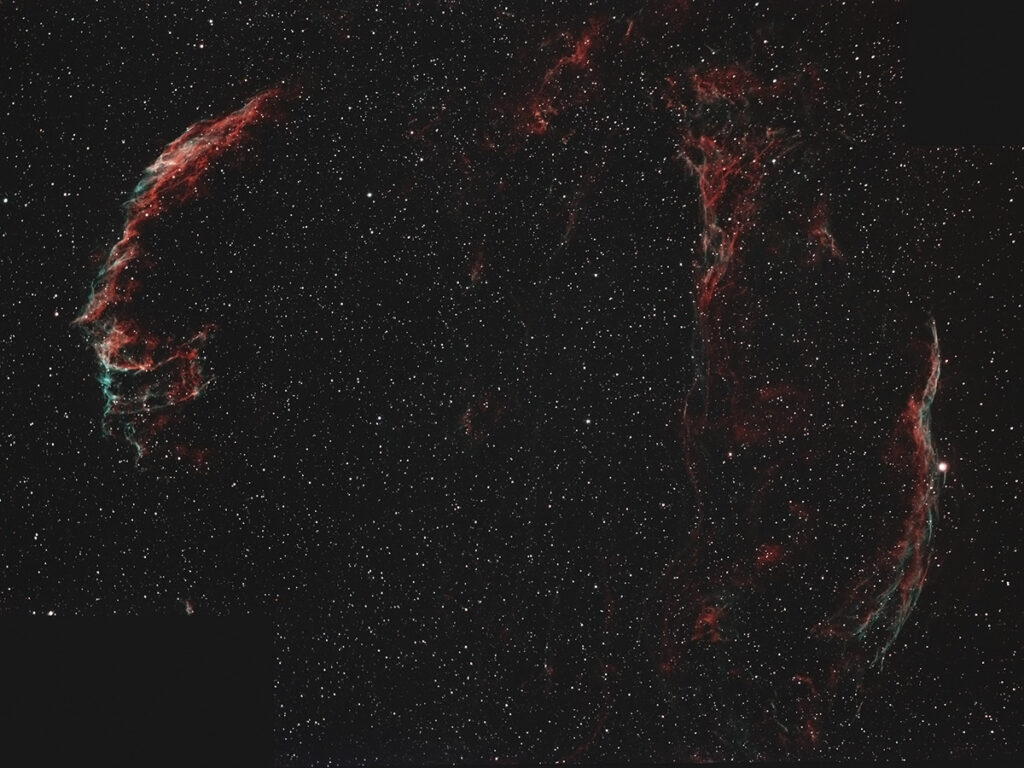
Telescope: ES Comet Hunter MN6 at f/4.8, Orion Atlas EQ-G
Camera: Baader modified Nikon 610
Filter: 2” Radian Triad Ultra Hb, OIII, Ha, SII filter
Guide scope: Williams Optics 50mm, ASI290MM mini, PHD
Exposure: 2x(16x240sec), ISO 400, saved as RAW
Darks: Internal (Long Exposure Noise Reduction On)
Flats: 64×1/5sec, tee shirt flats taken at dusk
Average Light Pollution: Red zone, Bortle 8, good transparency
Lensed Sky Quality Meter: 18.6
Stacking: Mean with a 1-sigma clip.
White Balance: Nebulosity Automatic
Software: Backyard Nikon, Nebulosity, Deep Sky Stacker, Photoshop
The Veil Nebula complex is the remnants of a supernova explosion that occurred between 10,000 and 20,000 years ago. At a distance of 2400 light years, this makes the nebula about 130 light years across. The various regions of the nebula marks the boundary of the shock front from the explosion expanding at a rate of 170 km/sec (106 miles/sec) and now spans a region nearly 3 degrees across in Cygnus. It is comprised of NGC 6992 & 6995 (left), NGC 6979 (upper right), and NGC 6960 (lower right).
The 2 panels of this mosaic were obtained on a single evening as part of a test of using relatively long exposures and narrow-band imaging using the Radian Triad Ultra with the Nikon 610a. The results are encouraging on both counts and bodes well for using this camera over the warm months of summer.
The Veil Nebula is currently well placed rising in the northeast late in the evening and is high overhead as the first blush of dawn tints the morning sky.
Recent Comments